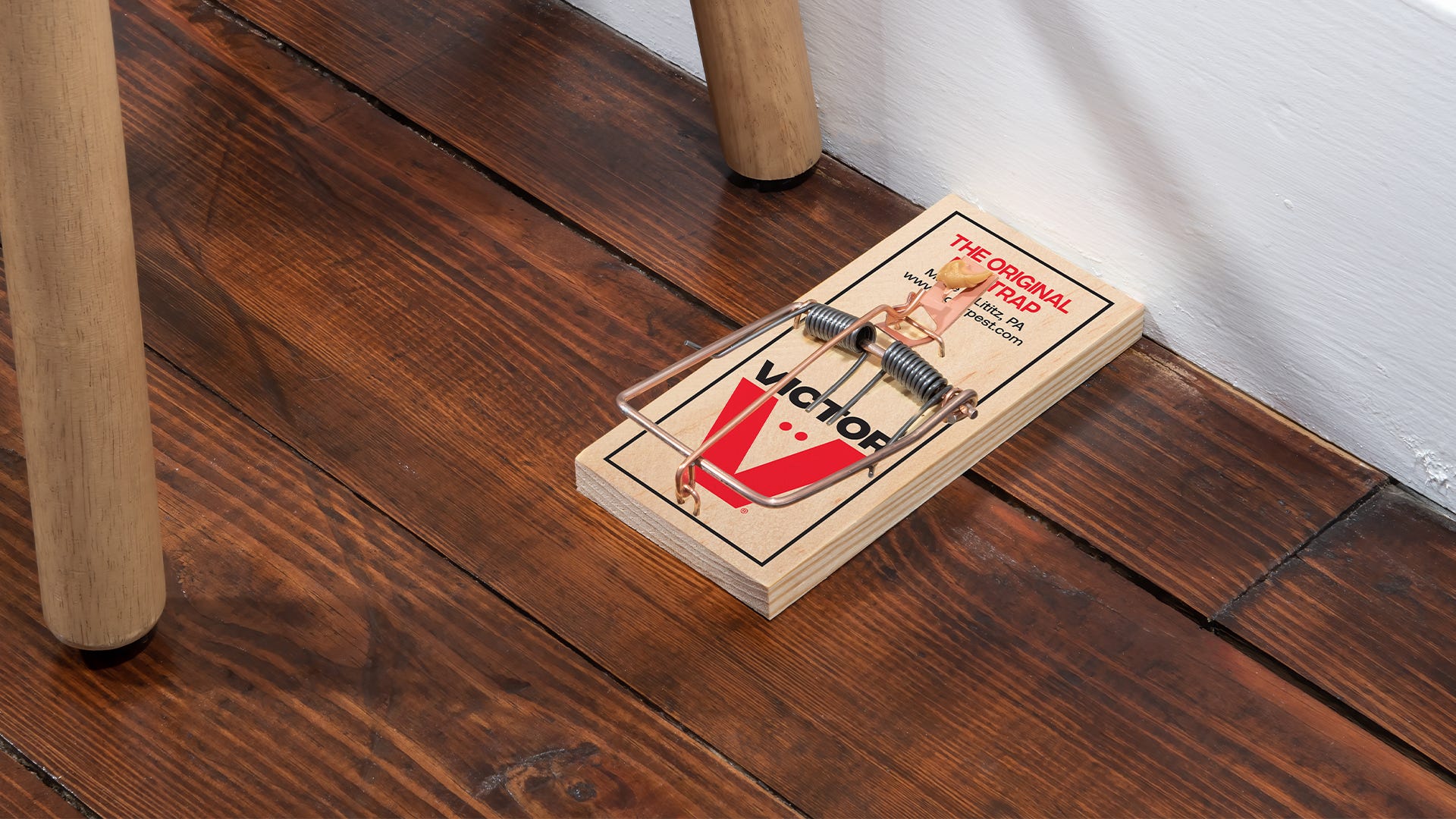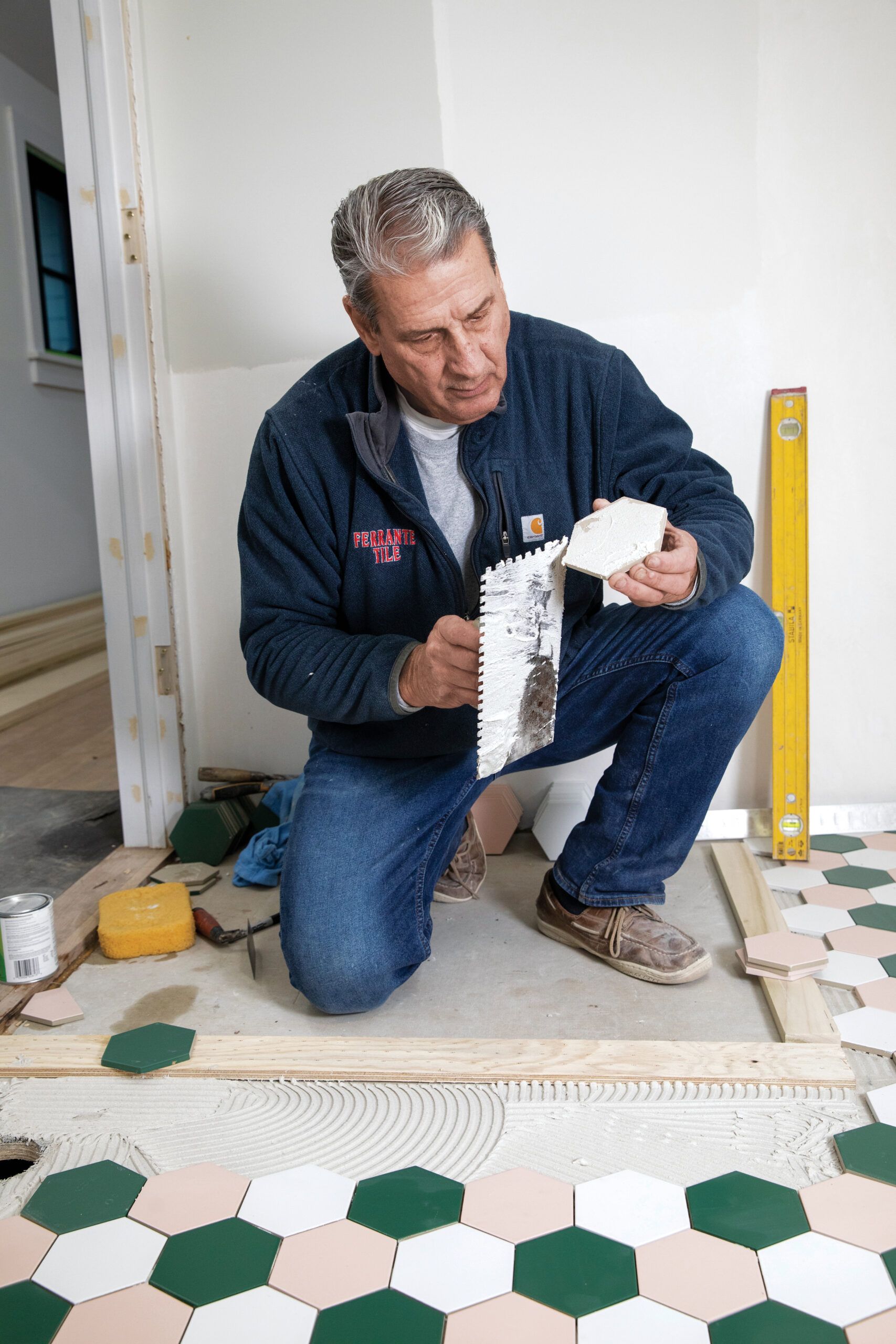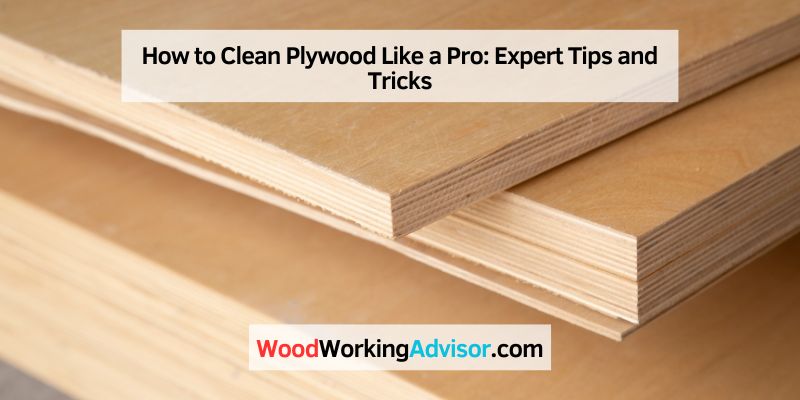To clean plywood, start by removing any debris or loose dirt using a soft brush or vacuum cleaner. Then, mix a mild detergent with warm water and gently scrub the plywood surface using a sponge or soft cloth.
Rinse thoroughly with clean water and allow the plywood to dry completely before using or applying any finishes. Keeping plywood clean and well-maintained is essential to ensure its longevity and aesthetic appeal. Regular cleaning not only removes dirt and grime but also helps to protect the surface from potential damage.
We will discuss effective methods and steps to clean plywood effectively. By following these simple guidelines, you can easily preserve the natural beauty of plywood and extend its lifespan. Whether you have plywood furniture, flooring, or any other plywood surfaces, proper cleaning techniques are crucial. So, let’s dive into the cleaning process and discover how to keep your plywood looking fresh and clean.

Credit: www.victorpest.com
Choosing The Right Cleaning Supplies
To effectively clean plywood, select gentle cleaning supplies such as a mild detergent and water solution or white vinegar diluted with water. Avoid harsh chemicals that can damage the wood. Use a soft cloth to gently scrub the surface, and ensure to dry the plywood thoroughly to prevent warping.
Selecting The Proper Cleaning Solution
When cleaning plywood, it’s important to select the right cleaning solution to effectively remove dirt, grime, and stains without causing any damage. Using the wrong cleaner can result in discoloration or even warping of the plywood surface. Here are some tips to help you choose the proper cleaning solution:
- Consider the type of dirt or stain: Different cleaning solutions are designed to target specific types of dirt or stains. Assess the nature of the dirt or stain on your plywood to determine the appropriate cleaner.
- Check the manufacturer’s recommendations: Consult the manufacturer’s guidelines for cleaning instructions and recommended cleaning products. Using products specifically recommended by the manufacturer ensures that you won’t inadvertently damage the plywood.
- Opt for mild cleaners: In most cases, mild cleaners work best for cleaning plywood. Harsh chemicals can strip away protective coatings or finish, leaving the plywood vulnerable to damage.
- Avoid abrasive cleaners: Abrasive cleaners can scratch or damage the surface of the plywood. Look for non-abrasive cleaners that are gentle yet effective in removing dirt and stains.
- Test the cleaner: Before applying the cleaning solution to the entire plywood surface, do a small patch test in an inconspicuous area. This will help you determine if the cleaner is safe to use without causing any adverse reactions.
Using The Right Tools
In addition to selecting the proper cleaning solution, using the right tools can make a significant difference in the overall effectiveness and safety of your plywood cleaning process. Here are some essential tools that can help you achieve optimal results:
- Soft-bristle brush or sponge: A soft-bristle brush or sponge is ideal for gently scrubbing the plywood surface without causing any damage. Avoid using stiff brushes that could potentially scratch the plywood.
- Microfiber cloth: A microfiber cloth is excellent for wiping down the plywood after cleaning, as it effectively picks up dirt and debris without leaving behind any lint or streaks.
- Bucket: Fill a bucket with the appropriate amount of cleaning solution and water. Having a bucket at hand ensures that you have enough cleaning solution readily available throughout the cleaning process.
- Gloves and protective eyewear: It’s always a good idea to protect your hands and eyes when working with cleaning solutions, especially if they contain harsh chemicals. Wearing gloves and protective eyewear will minimize the risk of irritation or injury.
Prepping The Plywood Surface
Before you can begin the cleaning process, it’s important to properly prep the plywood surface. This will ensure that you achieve the best results and improve the longevity of your plywood. Here, we will cover two crucial steps to get your plywood ready for cleaning: Removing Loose Debris and Addressing Stubborn Stains.
Removing Loose Debris
The first step in prepping your plywood surface is to remove any loose debris that may be present. This includes dust, dirt, leaves, or any other particles that have accumulated over time. To do this, follow these simple steps:
- Start by gently sweeping the plywood surface with a broom to remove larger particles. Make sure to pay attention to the corners and edges.
- Next, use a soft brush or a vacuum cleaner with a brush attachment to further remove any remaining debris. This will ensure that the cleaning solution can penetrate the surface effectively.
- For stubborn debris that may be stuck to the plywood, you can carefully use a putty knife or a scraper to gently scrape it off. Be cautious not to damage the surface or leave any scratches.
Addressing Stubborn Stains
Once you have removed the loose debris, it’s time to address any stubborn stains that may be present on your plywood surface. Follow these steps to effectively tackle them:
- Identify the type of stain you are dealing with, whether it’s oil-based, water-based, or something else.
- For oil-based stains, apply a mild detergent or dish soap mixed with warm water to the affected area. Use a soft cloth or sponge to gently scrub the stain in a circular motion. Rinse with clean water and pat dry.
- For water-based stains, you can use a mixture of vinegar and water, or a specialized wood cleaner. Apply the solution to a soft cloth or sponge and gently rub the stain until it fades away. Rinse with clean water and pat dry.
- If the stubborn stain persists, you can try using a mild abrasive like baking soda or toothpaste. Apply a small amount to the stain and gently scrub with a soft cloth. Rinse thoroughly with clean water and dry.
By following these steps to prep your plywood surface, you are now ready to move on to the actual cleaning process. Remember, a well-prepared surface will yield better cleaning results and help you maintain the beauty and integrity of your plywood for years to come.
Cleaning Techniques For Different Plywood Finishes
Discover effective cleaning techniques for different plywood finishes. Keep your plywood looking its best with these simple methods.
When it comes to cleaning plywood, different finishes require different approaches. From unfinished to varnished or sealed plywood, each requires unique care. Follow these cleaning techniques to keep your plywood looking its best.
Cleaning Unfinished Plywood
Unfinished plywood needs gentle cleaning to avoid damage. Start by removing dust and dirt with a soft brush or vacuum cleaner. Avoid using water-based cleaning agents, as they can warp the wood. Opt for dry methods such as wiping with a microfiber cloth. If a spot requires cleaning, use a damp cloth with mild soap, then dry it immediately.
Caring For Varnished Or Sealed Plywood
Varnished or sealed plywood requires more careful cleaning to maintain the finish. Begin by dusting or vacuuming to remove loose particles. Use a mixture of mild detergent and water to clean, ensuring the cloth is only damp, not wet. Wipe in the direction of the wood grain to prevent streaking and dry immediately with a clean, dry cloth. Refrain from using abrasive cleaners or chemicals that can harm the finish.
Remember, a little care goes a long way in keeping your plywood looking pristine.
Ensuring Proper Drying And Maintenance
Ensure proper drying and maintenance of plywood by following these steps: clean the surface with a mild detergent, rinse thoroughly, and dry completely. Avoid excessive moisture and direct sunlight to prevent damage. Regular maintenance will prolong the durability and lifespan of your plywood.
Allowing Sufficient Drying Time
When it comes to cleaning plywood, ensuring proper drying is essential for maintaining its integrity and longevity. Plywood is a strong and versatile material, but it is susceptible to damage if not dried correctly. To avoid warping, buckling, or the growth of mold and mildew, it’s important to give plywood sufficient time to dry after cleaning.
After cleaning the plywood surface, allow it to air dry naturally. Depending on the temperature and humidity levels, this process can take anywhere from a few hours to a few days. Avoid using artificial heat sources, such as hair dryers or heaters, as they may cause the plywood to warp or crack.
Make sure the plywood is placed in a well-ventilated area to facilitate faster drying. If possible, position it in a sunny spot, as sunlight can help accelerate the drying process. Additionally, ensure that both sides of the plywood are exposed to air, as this allows for uniform drying and reduces the risk of moisture retention.
Implementing Long-term Maintenance Practices
Maintaining the cleanliness and condition of plywood requires a long-term approach. By implementing regular maintenance practices, you can prolong the lifespan of your plywood and keep it looking its best. Here are some essential steps to follow:
- Inspect the plywood regularly: Perform a visual inspection of the plywood every few months to identify any signs of damage, such as cracks or delamination. By catching potential issues early on, you can prevent them from escalating and causing further damage.
- Remove dirt and debris: Use a soft brush or cloth to remove any dirt, dust, or debris that may have accumulated on the plywood surface. Regularly sweeping or dusting the plywood prevents abrasive particles from scratching or damaging the surface.
- Spot clean stains: If you notice any stains on the plywood, address them promptly. Gently scrub the stained area with a mild detergent and water solution, using a soft brush or cloth. Rinse thoroughly and allow the plywood to dry completely before applying any protective coatings or finishes.
- Apply protective coatings: To enhance the durability and appearance of plywood, consider applying protective coatings such as paint, varnish, or sealant. These coatings create a barrier that shields the plywood from moisture, UV rays, and everyday wear and tear. Follow the manufacturer’s instructions for application and reapplication.
- Avoid exposure to extreme conditions: Plywood is sensitive to extreme temperature and humidity fluctuations. Avoid exposing it to direct sunlight for extended periods, as this can cause fading or warping. Additionally, keep plywood away from areas with high moisture levels, such as bathrooms or kitchens, to prevent moisture-related damage.
By allowing sufficient drying time and implementing long-term maintenance practices, you can ensure that your plywood remains clean, robust, and resistant to damage. Regularly inspecting, cleaning, and protecting your plywood will help to preserve its beauty and extend its lifespan.
Common Mistakes To Avoid
When it comes to cleaning plywood, there are a few common mistakes that you should avoid. Overlooking hidden dirt and grime and using harsh cleaning methods can damage the plywood and affect its appearance. By being aware of these mistakes and taking the necessary precautions, you can ensure that your plywood stays clean and well-maintained.
Overlooking Hidden Dirt And Grime
One mistake that homeowners often make is overlooking hidden dirt and grime on the surface of plywood. While plywood might appear clean at first glance, there could be dirt and grime embedded in the crevices and cracks. It’s important to thoroughly inspect the surface and pay attention to these hidden areas while cleaning.
To effectively clean hidden dirt and grime, start by dusting the plywood surface with a soft-bristle brush or a microfiber cloth. This will help remove any loose particles that might be sitting on top of the plywood. Then, use a mild cleaning solution mixed with warm water to gently scrub the surface. Be sure to reach all the corners and edges to ensure a thorough clean.
Using Harsh Cleaning Methods
Another mistake to avoid when cleaning plywood is using harsh cleaning methods. Plywood is a delicate material that can be easily damaged by abrasive cleaners and rough scrubbing. It’s important to choose cleaning products that are gentle on the plywood and won’t cause any harm.
Instead of using harsh chemicals, opt for mild cleaners like dish soap or vinegar mixed with water. These gentle solutions will help remove dirt and grime without causing any damage to the plywood surface. When scrubbing, use a soft sponge or cloth to avoid scratching the plywood. Remember to always test the cleaning solution on a small, inconspicuous area before applying it to the entire surface.
In conclusion, overlooking hidden dirt and grime and using harsh cleaning methods are common mistakes when cleaning plywood. By being thorough in your cleaning process and using gentle techniques and cleaners, you can effectively clean your plywood without causing any damage or affecting its appearance.

Credit: www.thisoldhouse.com
Frequently Asked Questions For How To Clean Plywood
Can Plywood Be Washed?
Yes, plywood can be washed using a mild cleaning solution and a soft cloth. It’s important to dry it immediately to prevent water damage. Regular cleaning can help maintain its appearance and prolong its lifespan.
Is Plywood Easy To Clean?
Yes, plywood is easy to clean. It can be wiped down with a damp cloth or mild detergent. Stains and dirt can be removed easily, making it a low-maintenance option for surfaces.
How Do You Get Stains Out Of Plywood?
To remove stains from plywood, start by gently scrubbing the affected area with a mixture of mild detergent and warm water. Rinse with clean water and dry thoroughly. For stubborn stains, use a solution of vinegar and water or a baking soda paste.
Test in an inconspicuous area first to prevent damage.
How Do You Clean Untreated Plywood?
To clean untreated plywood, gently wipe with a damp cloth and mild soap. Avoid excess water to prevent damage. Sand any rough areas and let dry before sealing or finishing. Use a brush to remove surface dirt or debris. Regular dusting and maintenance will help preserve the wood.
Conclusion
Cleaning plywood may seem daunting, but with the right techniques, it can be a simple process. By following the steps outlined in this blog post, you can ensure that your plywood remains clean and well-maintained for years to come. Remember to use gentle cleaning methods and avoid harsh chemicals to preserve the integrity of the wood.
Regular maintenance and care will keep your plywood looking its best and extend its lifespan.


